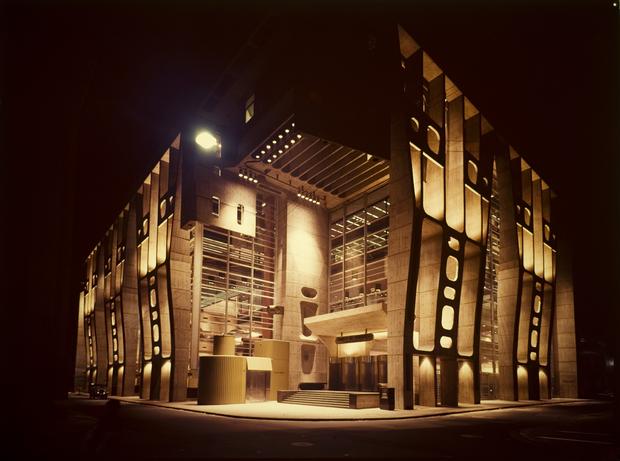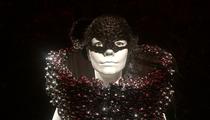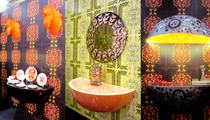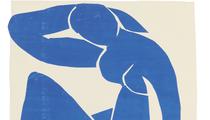Architecture Treasures from Latin Mega-Cities
Saturday, March 28, 2015
Play
00:00 / 00:00
 Lúcio Costa and Oscar Niemeyer. Plaza of the three powers, Brasilia, Brazil, 1958-1960. (Leonardo Finotti)
Lúcio Costa and Oscar Niemeyer. Plaza of the three powers, Brasilia, Brazil, 1958-1960. (Leonardo Finotti)
A New York museum is highlighting the architectural treasures created during an exciting and messy time in Latin America.
Between 1950 and 1980, while several countries in the region were ruled by military dictatorships or transitioning to democracy, they were booming with economic development while masses migrated to urban centers looking for work. Cities like São Paulo and Rio de Janeiro, in Brazil, Mexico City, in Mexico, Caracas, in Venezuela, and Santiago, Chile, multiplied their population more than two or three fold.
Many became mega-cities and became the sites of masterworks in architecture, highlighting revolutionary plans for public housing and public spaces.
Those plans are now in the exhibit “Latin America in Construction: Architecture 1955-1980” at the Museum of Modern Art. It presents more than 500 original works that have largely never been exhibited, including architectural drawings and models, photographs, and films.
The show includes details of the development of several key university campuses in cities like Mexico City and Caracas or and in one case, a whole city itself — Brasilia, the new capital of Brazil, planned by famous Brazilian architect Oscar Niemeyer starting in 1956. It also highlights several buildings, like Clorindo Testa’s Bank of London in Buenos Aires, Argentina, which created a new type of urban building by theatrically linking interior spaces to the street. Or Lina Bo Bardi’s art museum in São Paulo, a rectangularly-shaped glass cube suspended in four red columns. And Abraham Zabludovsky and Teodoro González de León’s modular building for the Rufino Tamayo Museum in Mexico City.
Barry Bergdoll, the lead curator of the show, said he didn’t know much about the region when he on exhibit. “The goal was to correct the fact I was taught nothing about Latin America [even] with three degrees in architecture," he said.
One of his personal highlights was learning about a United Nations-supported housing project in Lima, Peru, conceived in 1966 by British architect Peter Land. Land chose 26 architects who created houses that could be partially built and then expanded depending on the inhabitants’ resources or changed needs.
Bergdoll was also surprised by Brazilian architect Lucio Costa’s residential tower-in-a-park superblocks in Brasilia. “I was told Brasilia was an aberration,” he said. Bergdoll believes Costa and other architects of the region like Rogelio Salmona, from Colombia, should be in text books all over the world. "If the next generation of textbook is different, we would have succeeded in this show," he said.
James Russell, an architecture critic and author of “The Agile City: Building Well Being and Wealth in an Era of Climate Change,” said the exhibit plants a lot of seeds that are still being debated today in Latin America. “Lots of beautiful ideas about housing, architects with amazing swaths, elegance, and a lot of energy and responsiveness about climate, landscape, water,” he said.
Russell said Brazilian Lina Bo Bardi is one of the architect stars of that era. “She was a woman who made it in a men's world, Italian, moved to Brazil, but also, had an incredibly diverse career, “ he said. “From a really elegant, beautiful modern art museum that she did and then she dove into folk culture and said, how do we capture them in architecture?”
Throughout the show, Russell said there are several examples of the idealism of the time, and the urge to try new things. “But then there are things that are much more humble and modest,” he said. One example is the Iglesia de Cristo Obrero, made by Eladio Dieste in Atlantida, Uruguay from 1958 to 1960. It’s made by brick, with curved surfaces. “There is a tactility that is both sort of sexy and yet rather austere, they stop you in your tracks.”
To show how some of these buildings look today, MoMA partnered with Instagram, and is inviting the public to share pictures from the region using #ArquiMoMA. Select photos will be featured on a display in the exhibition galleries and on the museum’s website.









